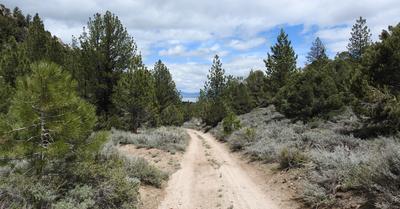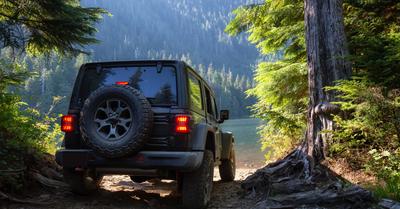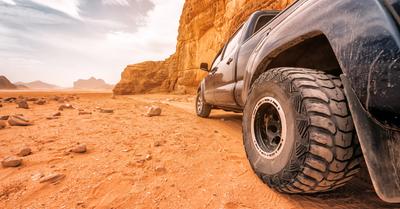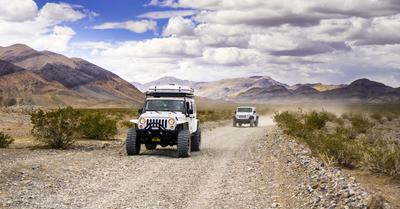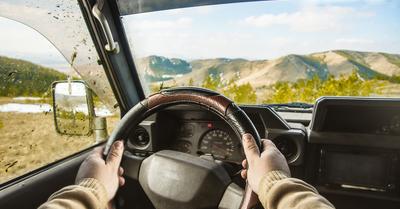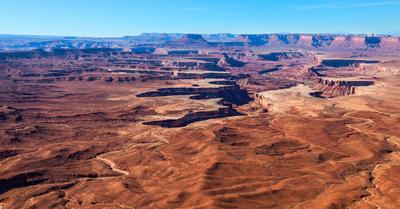Jeeps are known for their off-roading abilities. But is it just aesthetics, or are Jeeps superior off-road vehicles?
Jeeps are some of the best factory off-road vehicles on the market. Jeep Wranglers have stronger parts, higher ground clearance, and a shorter wheelbase which makes them superior off-roaders.
In this article, we’ll cover why Jeeps are good for off-roading. We’ll go over the qualities that set them apart from other off-road vehicles, as well as the massive modification aftermarket that makes Jeeps some of the most capable vehicles in the world.
We sourced the technical information used in this article from publicly available records, along with from Jeep itself.
This article may contain affiliate links where we earn a commission from qualifying purchases.
Short Jeep Wheelbase
Jeep basically invented the off-road vehicle back in the 1940s, and they’ve retained their best qualities over the years. One aspect of this is a short wheelbase, which reduces the risk of high-centering over rough terrain.
All things considered, even the newer four-door Jeep Wranglers have a pretty short wheelbase. It’s roughly equivalent to a single-cab pickup truck, which is the most desirable configuration for off-roading.
Imagine trying to off-road an extended-cab long bed pickup truck and going head-to-head with a two-door Jeep Wrangler. In almost any terrain, the short Wrangler wins.
High Ground Clearance
Jeeps have very high ground clearance from the factory. This is in direct contrast to many other 4x4 vehicles on the market today, which prioritize wind tunnel tests and efficiency over off-road capability.
Stock Jeep Wranglers have between 9.7 and 10.8 inches of ground clearance—compare that to the F150 Raptor, which has just 9.9 inches at its highest factory level.
Big Wheels and Tires
Jeeps are also great for off-roading because of their big wheels and tires. You won’t find a factory Wrangler with those fancy low-profile tires and tall wheels, as they’re not great for off-roading.
Jeeps use thick tires like pickup trucks used to, as they absorb bumps and increase traction off-road. Plus, Jeep Wranglers can accommodate 15 to 18-inch rims and off-road tires from the factory without a lift kit. Lifted Jeeps can accommodate pretty much anything the industry has to offer.
Solid Front Axles
Dana axles are a staple of American off-road vehicles. The company, which has been producing solid axles for decades, is one of the premier suppliers of durable drivetrain parts and differentials.
Jeep is one of the only manufacturers that still use solid Dana front axles in its vehicles. The Wrangler, which usually comes with a Dana 30 front axle, is a throwback to a time when all off-road vehicles used this superior technology.
Most automakers have since transitioned to independent front suspension and CV joints on their 4-wheel-drive vehicles. This improves on-road suspension and ride comfort but isn’t as strong or long-lasting.
Solid front axles protect most of the moving parts within a steel casing, which immunizes them from getting bashed apart with rocks or knocked easily out of alignment.
Heavy-Duty Manual Transfer Case
A manual transfer case is a rare sight in modern American vehicles. Jeep, on the other hand, refuses to part with the tough but somewhat clunky design that uses a manual lever to actuate drivetrain changes.
The transfer case on a typical Jeep has a 2H (2-high) position for on-road driving, a 4H (4-high) position for mild off-road driving, and a 4L (4-low) position for crawling and low-range gearing.
Manual transfer cases are more robust and reliable than electric ones. This is because, in situations where the car is stuck in a strange position, it’s still possible to force it into 4-wheel-drive to get out. In the same situation, an electric actuator may refuse to put the vehicle in 4.
Availability of a Manual Transmission
The availability of a manual transmission is a major perk for serious off-roaders. It allows full control of the vehicle, increases durability, and also increases the skill level required for off-roading.
This is rewarding and also an absolute necessity for some buyers, as the manual transmission option has now completely disappeared from new full-size trucks and SUVs.
Additionally, a manual transmission allows you to precisely control engine braking. Careful deceleration is key when descending steep grades, especially when driving on dirt or loose rocks—and a manual transmission can help you do so without overusing the brakes and risking an uncontrolled slide.
Off-Road Customization Options
So, what’s one of the most important things about Jeeps that makes them good for off-roading? It’s the aftermarket—and it’s one very large aftermarket indeed. Jeep has (probably) the most extensive parts and modification industries of any vehicle.
It beats the Toyota Tacoma and the Ford F150 without even trying, as you can get pretty much any modification you want for your Jeep. These parts include wheels, tires, suspension, skid plates, gears, axles, bearings, and even drop-in diesel engine kits.
Because of the extensive aftermarket, you can build a Jeep to be the best off-road vehicle for your local conditions. If you live in the desert, you can build a Jeep desert runner. If you’re down in the south, you can build a big tall mud bogging machine. The options are limitless.


